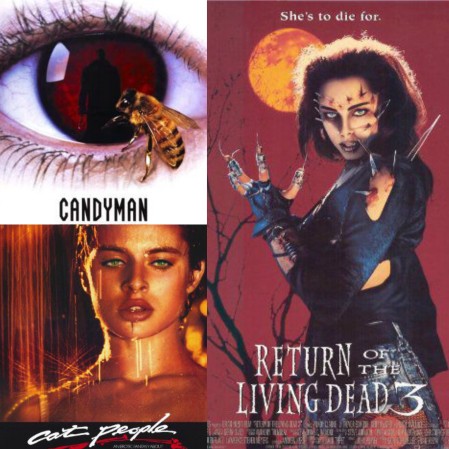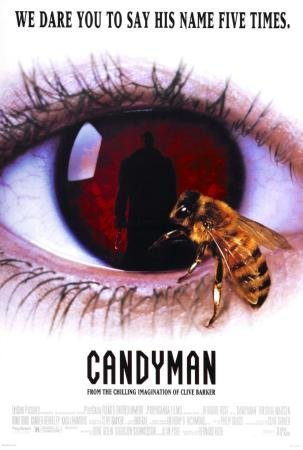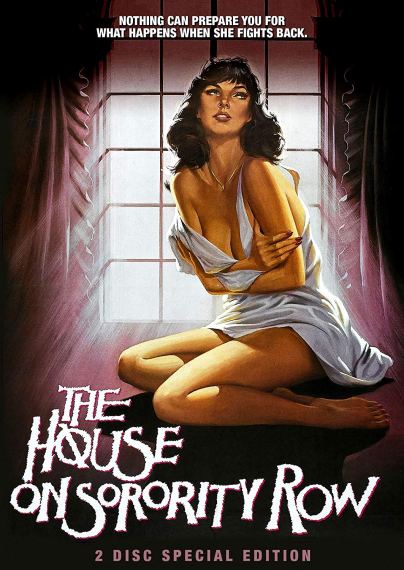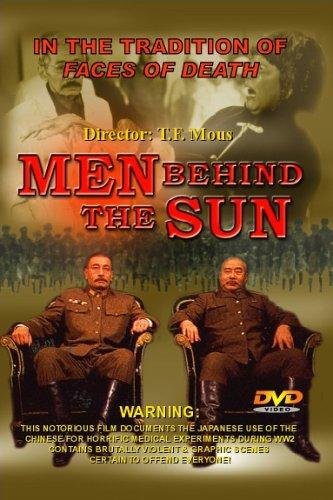
February presents many opportunities for a relationship to begin or strengthen. And why should it not? Cupid is flying around shooting people with his arrow. Secret admirers’ step from out the shadows to expose themselves to their crush. People are ripping their heart out and serving it on a platter to their lover. Without a doubt, love is in the air! Yet, while everyday couples celebrate Valentine’s Day at swanky restaurants, or a romantic getaway, where does this leave horror fans who wish to keep it simple?
Throughout the years, I have experienced Valentine’s Day in a diversity of celebration. Times when I have been single, I have gone out with friends or binge watched themed scary movies. Times when I dated likeminded horror geeks, we spent the night going to dinner and cuddling over a gore flick. Reflecting on the holiday, more times than not, my night has ended with blood on the silver screen.
In this entry, may one be single, or coupled with a horror junkie, here are some movie options for a night at home. In this compilation, since bad romance horror is vast within the genre, I debated how to narrow my list. Flicks about obsessed lovers or scorned spouses are a dime a dozen. These are the movies where characters receive either a black or white portrayal of good or evil. However, my favorite character, as one may know, is the gray character.
Browsing my video library, I decided to acknowledge romanticized horror icons. Ones who are as lethal as they are seductive. Considering this theme, my options became narrowed to creature features and boogeymen.

“Candyman” is the only movie that literally terrorized me as a child. Before seeing this classic, I felt I was enough of a seasoned horror fan to handle its content. However, I was wrong. Due to its visuals, storyline, soundtrack, and solid acting, the movie resulted in me being too afraid to go to the bathroom alone. Furthermore, it would be a cold day before I worked up the courage to chant “Candyman” in the mirror five times. Even in my adulthood, as much as I love this movie, I cannot watch it when I’m alone.
Based on Clive Barker’s short story, “The Forbidden,” the film adaptation introduces grad students, Helen and Bernadette. Together, they are conducting a thesis on how society clings to urban myth to cope with life. As they gather information, a student introduces Helen to the Candyman legend. Like Bloody Mary, if one chants Candyman’s name five times in a mirror, he will appear behind the conjurer. With Helen’s interest piqued, this legend begins to consume their thesis.
Next, Helen’s husband, Trevor, steps into plot. Though he should be supportive of her work, he has begun lecturing his students on urban legends. Disheartened that he has hijacked her subject, she brushes off his selfishness. Also, she dismisses the student who he is blatantly sleeping with. Regardless of him being a chauvinist, Helen keeps her chin up and focuses on her work.
During this time, she and Bernadette have doubted the Candyman legend. Because of their skepticism, they chant his name in the mirror the way daring children might. Yet, the boogeyman doesn’t appear. As their investigation continues, they arrive at his haunting grounds of Cabrini-Green. This landmark is a public housing development where over twenty people were murdered. Upon snooping through the gangland territory, they meet Anne Marie. Upon confrontation, they gain more insight on Cabrini, its residents, and Candyman.
In the next scene, Helen, Bernadette, and Trevor are dining out. At their table is Trevor’s condescending professor friend who mocks the women’s efforts. By conversation, Candyman’s origin story arises. Here, they learn that in 1890, a lynch mob murdered Candyman for loving and impregnating a white woman. After his death, they burnt his body and spread his ashes over what is now Cabrini-Green.
With this insight, Helen returns to the housing development. On her visit, she meets a boy named Jake who guides her to one of Candyman’s crime scenes. At this location, she is attacked by a gang member who poses as Candyman. After she is left brutalized, she goes to the police and puts the thug behind bars. Believing her assailant used the Candyman persona to keep residents afraid, she reasons to Jake, “Candyman isn’t real. He’s just a story, you know, like Dracula or Frankenstein.”
Little does she know that by her doubt and her chanting Candyman’s name, she has opened a door best left shut. To prove his existence, Candyman is now destroying Helen’s life. Not until she has lost everything does she realize her position in this nightmare has been set by fate.
The portrayal of Candyman paints a romanticized, tragic figure. Compared to other slashers like Jason, Freddy, etc. Candyman is seductive, attractive, and charismatic. These elements are built by his sultry voice and elegant but masculine body language. Throughout, there are many sides to Candyman’s character that establish him as my generation’s lonesome operatic phantom, seductive Dracula, or melancholy Frankenstein’s monster. A subliminal moment that hints at this is when Helen compares Candyman to “Dracula or Frankenstein.” By her juxtaposition, she has categorized him with past horror icons who have stirred pity or arousal in their viewers. Outside of filming, Tony Todd noted in an interview that he “wanted to find his own personal Phantom of the Opera.” In response to his statement, I believe he succeeded.
Beyond sex appeal, the main topics of “Candyman” are segregation and social class. Mirroring past and present, these issues are addressed by multiple angles. Past wise, Candyman’s origin story depicts a bloodthirsty history as he is murdered for loving a white woman. Present wise, deplorable living conditions and separating oneself by race and wealth remain the results of an upper-class elitist mentality. Among this topic, Candyman’s seduction of Helen reflects his tragic origin but it is masked by forbidden passion.
Character wise, Candyman provides three objectives to the black community. Foremost, he is a figure who residents use for coping with the horrors of their everyday life. Second, his legend scares children into being obedient. Third, his past cautions black men of what can happen if they “step out of line.” To the white community, Candyman presents another subject. He is a singular face put to racial fear and profiling.
Finally, “Candyman” is about the power of ideas, belief, and oral retellings. From the stance of ideas and belief, Candyman states he can only exist if his followers believe in him. This is fueled by the power of oral retellings and their fear. Since these subjects allow Candyman to exist, Helen must surrender to him because she tainted his lore with outspoken disbelief. Upon her martyrdom, the retellings of her brutal death will help his reputation thrive.

“Return of the Living Dead 3” while not frightening is a gruesome variation on “Romeo and Juliet.” With this installment, director, Brian Yuzna crawls out beyond the grave and gifts the fandom one of my all-time favorite zombie flicks. Unlike its predecessors, this standalone sequel is humorless. Because of the absence of comedy, this sequel feels desolate and hopeless while it glorifies two kindred spirits. For those who say love is dead, after watching this movie, they may be right.
The opening reveals a blast of 90s culture and introduces two young lovers, Julie and Curt. Having stolen his father’s military security card, he and Julie sneak onto the base where his father works. Once inside, they hide and observe a top-secret experiment being conducted by a lieutenant and colonels. Included among them is Curt’s father, Colonel John Reynolds. Amid their voyeurism, they bare witness to a corpse being exposed to the fictitious gas called Trioxin. To their amazement, the aftereffects of which cause the dead body to awaken as a zombie.
The goal of this revival is to utilize the living dead in war combat. Unfortunately, the zombie’s ravenous desire to consume human brains renders them useless. As the colonels and lieutenant contemplate options, the zombie goes berserk and attacks those within its containment area.
Once officials subdue the ghoul, the lovers flee to Curt’s home. Not long thereafter, John, who is oblivious to their shenanigans, arrives and is needing to speak with his son. In private, Curt learns John’s work is requiring them to relocate. Determined to stay with Julie, Curt refuses to accompany his father on another move. Although John demands otherwise, Curt stands his ground and he and Julie run off together. However, their happiness is shortly lived as a motorcycle accident kills Julie.
Unable to live without her, Curt breaks into the base and revives Julie’s corpse with the Trioxin gas. Upon her resurrection, she maintains her personality and morals. All seems well, until her brain begins to rot. As Julie undergoes decay, she begins experiencing hunger pains that normal food cannot subdue.
Holding onto who she is, she tries to stay virtuous, and temporarily, Curt’s love tames her craving. Yet, as the night continues, she resorts to self-mutilation to distract herself from inner pain. Still, she can only indulge in these substitutes so long before requiring human brains. As she descends into a zombie mentality, she maintains the ability to strike sympathy. Despite one mistake, she transforms into an anti-hero who accomplishes more good than bad.
Created like a love letter to the horror genre, this installment serves up brain food. For my generation’s cult fandom, Julie and Curt stand as romanticized horror icons who embody a great demographic of 90s kids. They are the shunned outcasts. They want to connect with others but can’t. Because of their social excommunication, they have found their place in the world of grunge, punk, and goth. They are what would happen if Romeo and Juliet mated with Kurt Cobain and Courtney Love.
Centered on them, there are many love story aspects. The list includes, but is not limited to, Curt’s father forbidding him from being with Julie. Another is how Curt can’t live without Julie, and despite the consequences, revives her. Last, when Julie returns to life, two elements prevent her from harming others. One is Curt’s love.
Aside from love, self-mutilation also subdues Julie’s transformation. In the 90s, self-mutilation and body modification underwent a better analysis. Foremost, with cutters, sometimes love isn’t enough. Zoning in on this philosophy, NOTLD 3 suggests Curt’s love can only ease Julie’s pain to a degree. When his love can no longer help, she results to self-mutilation for a distraction. In one scene, Julie notes she doesn’t feel dead or alive, but lonely. This statement sums up emptiness and how one may utilize self-harm as a distraction from those emotions.
The body modification portion of Julie’s transformation reveals something deeper. During her struggle of becoming a zombie, she loses her identity. For her, the only way to cling onto her human image, from this life to death stage, is modification. This makes sense as almost every bod mod individual hails piercings, tattoos, gages, etc. as being an extension of who they are.
Personality wise, besides Julie’s teenage angst, she is an adrenaline junkie. This trait may also be a vice to fill her void. Another personality trait is her obsession with death. Which oddly enough, death connects with her other tangible desires – life and sex. The topic leads to another message of NOTLD3. Aside from Gen X and Millennials embracing death as a fashion statement, death has a deeper philosophy.
Regarding martyrdom or suicide, some view death as a protest. Ever since “Romeo and Juliet,” dying for love is the ultimate revolt in romance fiction. Such as that literary classic, Curt and Julie’s world is nothing but dead ends. To exist together and escape this conflicting world, they must die for love. In vain of other romantic classics, this gem asks, how far would one go for the person they loved?

When seeing “Cat People” as a child, had my mother known it was more so softcore porn than a horror movie, she wouldn’t have let me see it. Yet, here we are. While maintaining an engrossing plot, “Cat People” beds down in the subgenre of erotic horror. With that said, there are more boobs than blood and the material isn’t frightening. Still, the unique fantasy of this classic can set the mood for horror lovers on Valentine’s Day.
The prologue shows a barren land where a primitive tribe ties a young girl to a tree. Seeing as she is a sacrifice, one expects for her to perish. Instead, a black panther approaches her, and by its movements, one feels that its intent is to mate. Leaving the scene to the viewer’s imagination, one can only assume the outcome resulted in zoophilia.
Next, the movie fast forwards to the present where protagonist, Irena, receives focus. Growing up an orphan, foster care separated her from her brother, Paul. As an adult, her goal is to find her sibling and make up for the lost years. Having succeeded, she steps into the New Orleans airport where Paul reenters her life.
That night, they reminisce and dine with his housekeeper, Female. Once the evening concludes, Irena retires to bed while Paul decides to prowl the city. Forward, the perspective and plot shifts. In a seedy hotel room, a panther attacks a prostitute. The following morning, zoologists Oliver, Joe, and Alice capture the beast. Based on assumption, one gathers that Paul has transformed into the irate feline.
Since Paul was to be Irena’s tour guide for New Orleans, Irena questions his whereabouts. Female speculates he is tending to other obligations and for Irena to explore alone. Taking Female’s advice, Irena sightsees where her wandering lands her at the zoo. Here, she becomes interested in a recently captured panther. This is when she meets Oliver, the zoo curator.
Smitten by her, Oliver takes Irena out for dinner and grants her a job in the zoo giftshop. Over time, he and she begin a romance that could mean her own undoing. After the captured panther attacks Joe, Paul returns into the picture. Yet, what he reveals to Irena is a horror spawned from their ancient bloodline.
In his explanation, he elaborates that he and she can only practice incest. Sex with anything more than their blood kin will result in morphing into a panther. Once transformed, nothing can return them to human form except consuming human flesh. At her sexual peak, Irena now struggles with her passion for Oliver and the repercussions of what will happen if he claims her virginity.
No matter what one takes away from this feature, may it be positive or negative, it is a sexual study. This subject branches off into other topics, such as bondage, incest, and zoophilia. Among these themes, zoophilia and incest constantly arise throughout the feature. Whereas bondage plays a role at the beginning and end.
Focusing on incest, for Irena to enjoy sex and not metamorphosize, she can only have sex with her blood kin. As expected, the thought is offsetting to her. No matter, Paul urges her to surrender to their needs. This way they can stay a true race who can have sex without the fear of bloodshed. In a way, this depicts a sick ploy. One that shows how predatory persons can manipulate their relatives against their will.
By the depiction of sex in “Cat People,” one sees the act is life changing. Furthermore, it suggests the power and influence that sex has over humanity. In its portrayal, sex falls into two categories. One is sensuality prior to intercourse. The other is brutality upon nearing orgasm.
From a misogynistic stance, “Cat People” focuses on men dominating women. This shows in the bondage scenes and when Irena’s brother urges her to practice incest. Still, these moments are but the tip of the iceberg. Its more ruthless perspective on male dominance comes from Oliver. While the movie shows that he admires Irena, it never depicts him loving her. I say this because all that is displayed during their game of hard to get is lust.
With dominance in mind, examining why Irena doesn’t kill Oliver suggests he has gained an upper hand. Another indicator is when he holds Irena at gunpoint and she asks that he kill her. When he refuses, she begs to be set free and reunited with her kind.
*POTENTIAL SPOILER* As expected, Oliver has sex with her, but he doesn’t fulfill his promise. Rather than reuniting her with her kind, he cages her in the zoo that he oversees. While she has become a prisoner, he visits her and pets her whenever he pleases. At last, Oliver has domesticated Irena.
To me, the ending portrays a depressing absence of freedom. However, the director, Paul Schrader, feels otherwise. In the director’s commentary, he explains he doesn’t see Irena as a prisoner. Rather he views Irena’s prison is a shrine of honor. Seeing as there are opposite perspectives, I feel how one interprets the end speaks volumes on their character.

I hope the titles on this entry will entertain horror lovers this Valentine’s Day. In the past, I have blogged about other movies that could be suitable for couples. Two that come to mind are “Cutting Class” and “Class of 1999.” While their primary focus isn’t romance, they do revolve around angsty teenage couples. CLICK HERE to read my entry on “In School Horror Movies” where I dissect these classics.































